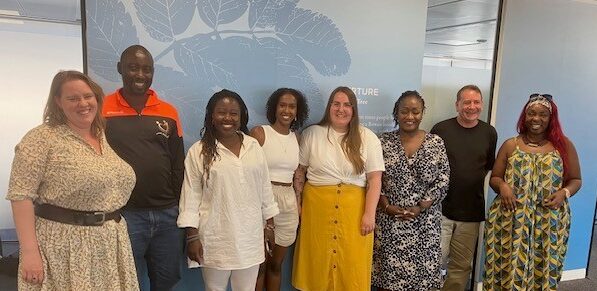Next Steps for Digital Trustee Recruitment: An Organisation’s Guide
01 August 2022 | Estimated reading time: 4 minutes

for organisations looking to recruit
Third Sector Lab have been running Digital Trustee matchmaking and information sessions for a while now. Our feedback shows that many enjoy the events, but are unsure about the next steps to take in the recruitment process.
As with most problems, this one has been addressed before by Reach Volunteering and Getting On Board (among others).
Reach volunteering made this website about it: Trustee Recruitment Cycle.
Getting on Board has this page with guides & tips.
If you would rather read a blog than visit those sites, stick around and read on!
This guide is aimed at third sector organisations looking to recruit a digital trustee.
Generally, your recruitment process will follow this format:
- Step 1 – Make sure you know what kind of digital trustee you need
- Step 2 – Write a vacancy
- Step 3 – Publish your vacancy
- Step 4 – Interview & onboard
If you already have a candidate in mind (perhaps you met them at a matchmaking event) and they are keen to join, you can skip ahead to interviewing & onboarding. Always ensure though that you don’t need to go through an open recruitment process to be compliant with your own or outside governing bodies’ conditions before doing so.
Even with a shortcut, the board recruitment process is generally slow. Board meetings happen only a few times a year, so if your induction process includes a requirement for attending two meetings before a vote of acceptance, that will likely take a few months. So don’t worry if it feels it taking a long time – it just does!
Step 1 – Make sure you know what kind of digital trustee you need
Joe Roberson wrote a very helpful blog about this recently for Catalyst. To quote the core of it:
There are essentially three different types of digital trustees.
- Tier 1: Generalist – for small organisations and those starting out with digital
- Tier 2: General-specialist – for organisations with a good digital infrastructure wanting to build capacity in a few particular areas
- Tier 3: Service specialist – for digitally experienced organisations looking to innovate and deliver more digital services
(this is based on Reach Volunteering’s three tiered model of digital trustees).
For more context and in-depth information, click through to the full blog here.
If you are unsure how to determine what you need, you may need to take some time to look at where you are at as a board and what you need from a digital trustee. To help you identify the digital skills gap on your board, use this skills audit guide to help you.
Step 2 – Write a vacancy
You can use this template for the job description (click to start download).
Consider what you need from your trustee and be specific.
- Refer to the person specification you drafted in step 1.
- What is the time commitment for meetings and in between?
- Will meetings be in person or virtual, or both?
- Will there be away days?
- Will there be a specific remit or project?
- Do you have a current (digital) strategy it would be worth referring to? etc
This is also the time to consider what your recruitment process will look like and who will be involved in it. Plan carefully and make sure everyone is on the same page.
Ensure your process and person spec is inclusive! (Some resources on how to here).
Step 3 – Publish your vacancy
There are many excellent places to recruit volunteers. As well as your own channels, try and recruit outside the box to ensure your process is inclusive. More on how to do this successfully in this blog from Getting On Board.
Suggested places to post your vacancy:
- Online – Reach Volunteering, NCVO, Trustees Unlimited, Volunteer Scotland, Goodmoves, and the Digital Trustees Slack channel, your local TSI, LinkedIn, your social media channels & website, and your organisation’s newsletter are a good start.
- Offline – local newspaper, notices & posters in libraries, supermarkets, shops, community centres.
Consider the format of your vacancy – you can have a written version, but you could also post a video with it. Make it part of your open day, or another public facing event that you are hosting anyway.
Step 4 – Interview & onboard
Being a trustee is very different from being an employee. For one thing, trustees are volunteers who don’t get paid for their time. The interviewing process therefore will have a different feel to it. This is more about making sure that you are a good fit for each other- you are building a long-term relationship.
Once you have invited someone to join your board, ensure you have a good onboarding process in place. SCVO have these excellent resources to help you with that.
Be clear on your expectations. Communicate clearly and make sure your new board member feels heard.
That’s it! Congratulations, you have successfully recruited a new board member!
Lots of the resources in this blog have been written by Reach Volunteering, and you can find many more on their website.
Want to find out more about Digital Trustees? Follow this link to see our webpage.







